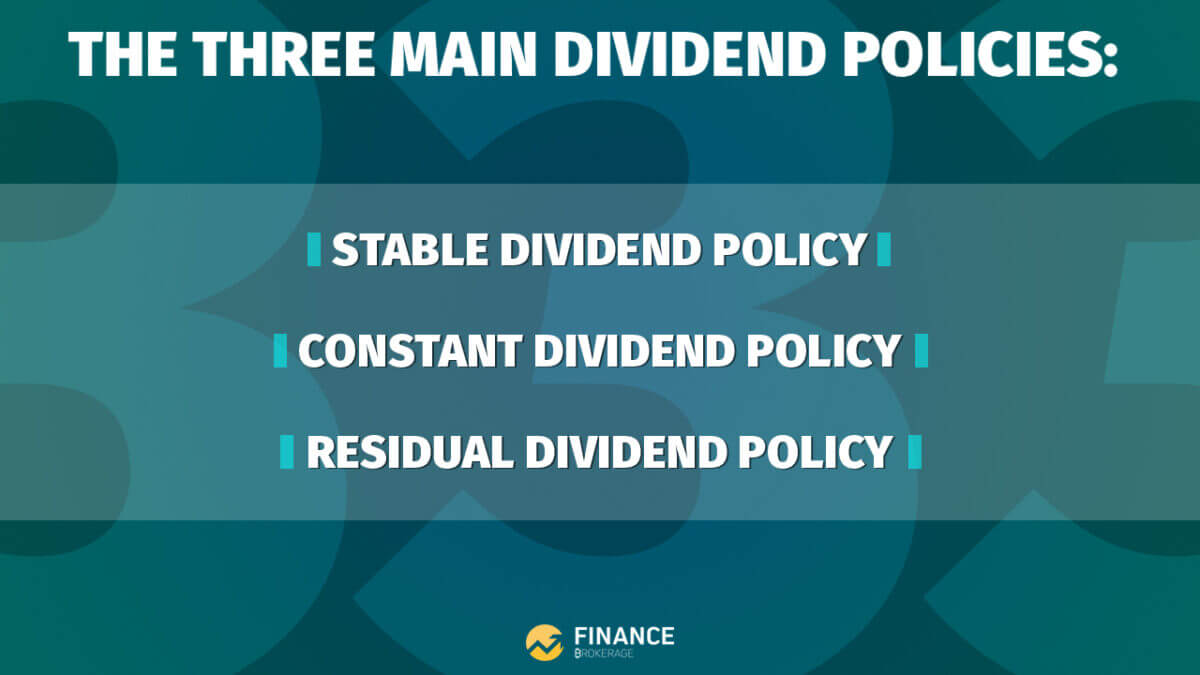
What Are The Types Of Dividend Policy – Get All The Info
Key Takeaways:
- Dividend policies set rules for profit distribution to shareholders.
- The primary dividend policies are Stable, Constant, and Residual.
- Not all companies provide dividends; some prioritize reinvestment.
- Dividends influence stock prices, with theories both supporting and opposing this notion.
- Dividends can be taxed, and various factors affect the dividend distribution.
Have you ever thought about what are the types of dividend policy exactly? What kind of policy does it represent? Policies are rules that help make decisions and are followed by organizations. The governing body sets them.
A dividend policy dictates how and when a company gives profits to shareholders. Some types are stable (consistent payouts), constant, and residual. Dividend stability, as a term, refers to consistent payouts. Not all companies provide dividends.
But what does it all mean? Why is it so crucial to get to know all the dividend types and understand them correctly? Let’s get all the answers from the basic explanation, shall we?
Dividend policy – explained by a true professional
As mentioned above, a dividend policy sets how a company shares profits with shareholders. It clarifies the frequency, timing, and amount of payouts. The three main policies are stable, constant, and residual.
Though dividends are optional, many investors see them as indicators of a company’s financial well-being. In short, we can say that:
- Dividend policies shape a company’s profit-sharing approach.
- They play a strategic role in a company’s operations.
- The primary policies are stable, constant, and residual.
- Dividends, though not obligatory, often reflect a company’s financial strength.
What are the Dividend types you need to know about?
The three main dividend policies are Stable, Constant, and Residual. These are explained by the residual dividend model, which distributes dividends from leftover funds after necessary business expenses.
Here is a more detailed explanation of these types of dividend policies:
-
Stable Dividend Policy
-
- Most common and straightforward.
- Ensures a consistent dividend payout, making it predictable for investors.
- Focuses on steady dividend growth aligned with the company’s long-term vision rather than short-term earnings fluctuations.
-
Constant Dividend Policy
-
- A set percentage of yearly earnings determines the dividend payout.
- Offers a direct reflection of company performance: dividends grow in prosperous years and might be absent during lean times.
- Provides transparency but exposes investors to earnings volatility.
-
Residual Dividend Policy
-
- Dividends are paid from the remaining funds after essential company expenses, like CAPEX.
- This method can lead to varied dividend growth due to its direct reliance on leftover funds.
- Emphasizes reinvesting in the business first, ensuring only surplus funds are used for dividends.

Understanding Dividend Policies
Companies may distribute profits to stock shareholders as dividends, offering a consistent income source. Many investors find this attractive. The dividend yield shows this. The dividend yield indicates the yearly dividend income as a stock price percentage.
A dividend policy provides clarity on:
- Dividend frequency (e.g., monthly, quarterly, annually).
- Payment timing.
- Dividend amount.
The company’s leaders manage these policies. The company’s leaders manage the policies regarding dividends.
They offer two options for receiving dividends: cash or reinvesting through a Dividend Reinvestment Program (DRIP). In this regard, the choice made by shareholders also impacts the taxation of dividends.
Do dividend policies influence stock prices?
Some experts believe that dividend policies do not affect stock prices. On the other hand, dividend policies can influence stock values and how investors perceive them.
Lastly, it’s worth noting that only some companies opt to pay dividends, with some prioritizing business growth by reinvesting all profits.
What is dividend relevance theory?
The relevance theory of dividends suggests that a company’s dividend policy directly impacts its stock market value. Specifically, higher dividend payouts can boost the stock’s value, while lower dividends might decrease it.
This theory believes dividends influence a firm’s value, whereas the dividend irrelevance theory argues they don’t impact it.
Dividend Irrelevance theory – explained.
On the other hand, the dividend irrelevance theory argues that dividends don’t impact a company’s stock price.
Reinvesting profits can be more beneficial for long-term growth than paying dividends. However, some critics believe dividends can boost a company’s stock value.
The best types of dividend policy examples – are explained.
To understand types of dividend policy better, it’s always best to get a clear example. Here’s how you can understand it:
In 2017, Global Energy Corp (GEC) shocked the finance sector by reducing its dividend payout by 70%. This caused a significant decrease in the company’s stock value. Despite this, many believed the firm was making prudent long-term decisions.
This strategic move proved beneficial. By mid-2018, Global Energy Corp’s share price had rebounded, climbing by roughly 20%. By early 2020, they increased their dividend by 20%, reinforcing trust among investors in the enterprise.
Dividend taxation – what is it exactly?
If you were wondering how dividends are taxed, let’s get it this way:
Investors are taxed on dividends, often referred to as cash dividends. A 10% TDS is applied to annualized dividend payouts that exceed INR 5,000 within a year.
If an individual’s total income, including dividends and any capital gain, is under the tax exemption limit, they can submit forms 15G/15H to prevent TDS.
What is Dividend Distribution and Its Various Forms?
Dividends are a form of distribution made by companies, including giants like Coca-Cola, Apple, and Microsoft, from the company’s profits. They present a steady source of income, making such companies attractive as dividend-paying stocks for investors.
These dividends can be disbursed on different schedules, such as monthly, quarterly, or annually. Firms not primarily centred on growth often lean towards dividend distribution.
The form of dividends offered can vary. Most companies give cash dividends, but some also give stock dividends, which means investors get more shares.
Are there less common dividend forms?
There are also less common forms of dividends, such as scrip, property, and special.
It’s essential to understand that while many investors invest in a company with the expectation that the company pays dividends, only some companies do so.
The dividend amount paid and the decision to distribute them lies with the company’s board of directors. Some businesses regularly disburse dividends from their profits, while others prioritize reinvesting all their earnings for growth, forgoing a typical dividend policy.
Conclusion
The types of dividend policy a company adopts guide how it distributes dividends to its shareholders.
These policies are vital indicators of a company’s financial health.
The three main policies are Stable, for regular payouts; Constant, which ties dividends to yearly earnings; and Residual, based on remaining funds after big expenses.
By grasping these policies, one can assess a company’s fiscal robustness and attractiveness to investors.




